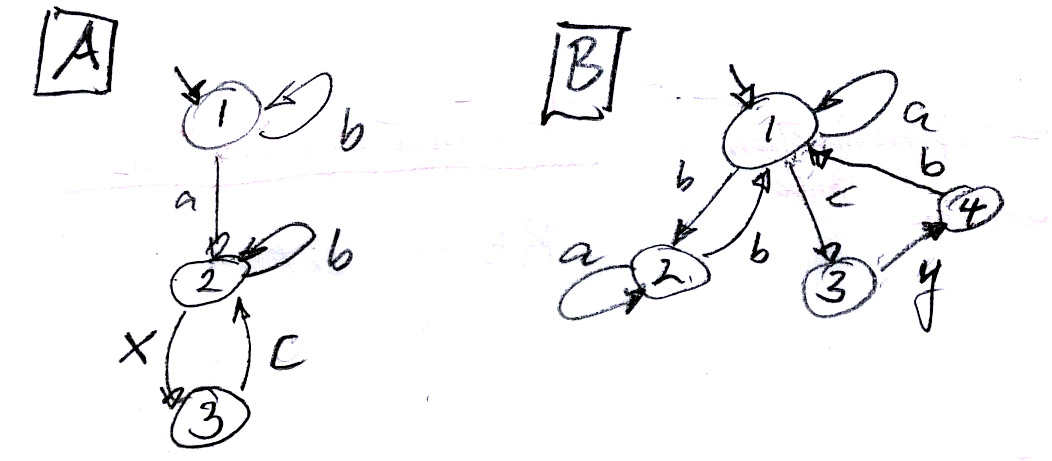Analyzing a communication protocol with LTSA. Study the specification of the simplified TCP model ( CommProtocol.lts ) by comparing the LTS model with the SDL model given in the course notes (see at the end of this page). Do you note any differences ? - You may use the LTSA tool to perform a simulated execution of the model, or use the CHECK facilities to find problems with the model. Notes:
- There are two LTS-machines representing the communication medium (the underlying IP network) in the two direction of message transfer. They are written in such a way that in each direction, there can be at most one message in transit; but there may be two messges in transit, one in each direction.
- The situation where in the SDL model discussed in the course notes, there is a message to be received for which the behavior definition of the receiving component has nothing mentioned for this case (called non-specified reception) will normally lead to a deadlock in the corresponding LTS model (because in the LTS model the different components communicate by rendezvous and a message which is not foreseen by the receiving component cannot be received - there is no possible rendezvous - the system gets blocked.
- Identify the reason why the behavior of this model may lead to a deadlock. Find a solution to this problem by suggesting some changes to the model about how the disconnection is handled. (Suggestion: instead of having a single message signalling disconnection, introduce a disconnect confirmation message which must be received before a telephone can go back to the initial state). Verify that the modified model does not have any deadlock.
- Your report should include: (1) explanation of the reason for deadlock, (2) revised system specification, (3) explanation of the verification results obtained from LTSA for the revised specification.

